April showers bring May flowers, and hail - lots and lots of hail.
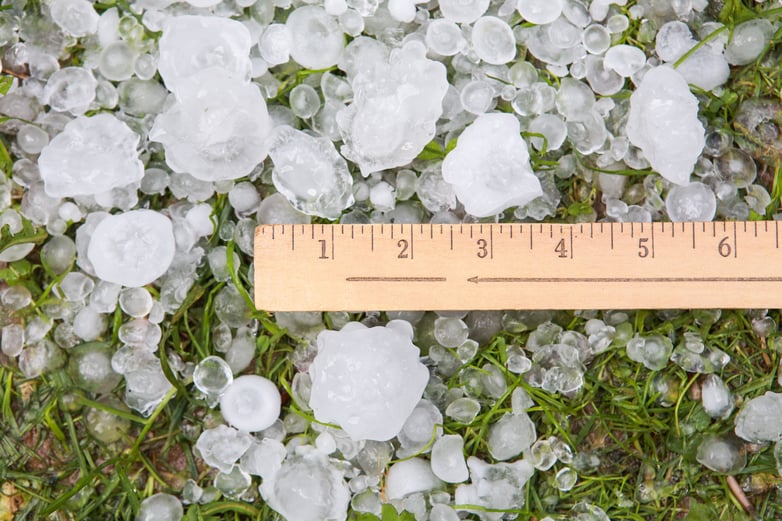 Midwesterners know all too well that when the weather changes during the spring and summer months, unpredictable storms pop up everywhere, and often times, they produce hail. While hailstorms vary in severity, they often cause noticeable damage to your home, vehicles, and other personal property. As property owners, it's important to understand the main factors that affect the type and degree of damage caused by a hailstorm:
Midwesterners know all too well that when the weather changes during the spring and summer months, unpredictable storms pop up everywhere, and often times, they produce hail. While hailstorms vary in severity, they often cause noticeable damage to your home, vehicles, and other personal property. As property owners, it's important to understand the main factors that affect the type and degree of damage caused by a hailstorm:
Size & Density
The size of the hailstones can affect the degree of damage, if any, to your property. Hailstones can be as small as a seed, or as large as a softball. And most hailstones do not have smooth edges, which affects the type of damage they cause.
Wind
Wind speed and direction can vary during a hailstorm, and changes in wind conditions can affect the location and severity of hail impacts.
Building Materials
The way that different types of building materials absorb hail impacts varies. Hail can cause dings in aluminum siding, gutters or asphalt shingles, but can crack vinyl siding. Softball-sized hailstones can be dense enough and strong enough to puncture a roof.
Age & Condition of Roof
Roofs that are old in age and have lots of missing/weathered shingles are more likely to see damage from hail, accompanied by leaks when hit hard enough.
Barriers
The position of neighboring structures and natural barriers like tree cover, landscaping, fences or adjacent homes can lessen the ability of hail to cause damage.
After a hailstorm passes, your property will need to be inspected for damage. Your roof typically takes the brunt of the damage to your home, but what exactly does hail damage to your roof look like?
Asphalt & Composition Shingles
- Hail hits are black in color and soft to the touch, like a bruise on an apple.
- Damage is random with no obvious pattern.
- Roof felt is exposed due to loss of granules.
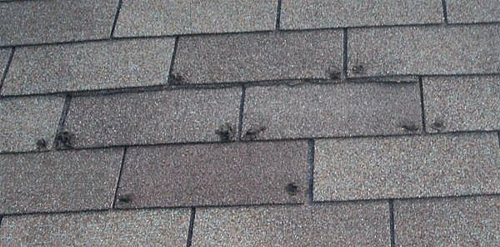
Metal Roof
- Hail hits cause damage on the seam of metal panels, causing buckling.
- Hail hits cause dents that hold water.
- Fasteners might be disengaged.

Because there are many other types of damage to shingles that can be mistaken for hail damage, don't jump to conclusions. Continuous exposure to inclement weather and sunlight can cause shingles to become brittle and faded, giving them a damaged appearance. This is normal wear and tear, but can sometimes be misidentified as hail damage. Other types of normal wear and tear may include blistering, cracking, granule loss, flaking and algae. Manufacturing defects and mechanical imperfections in shingles can also be mistaken for hail damage.
Now that you know the true causes and signs of hail damage, consider these preventative measures to ensure your property is ready for the next hailstorm.
Inspect & Maintain Your Roof Regularly
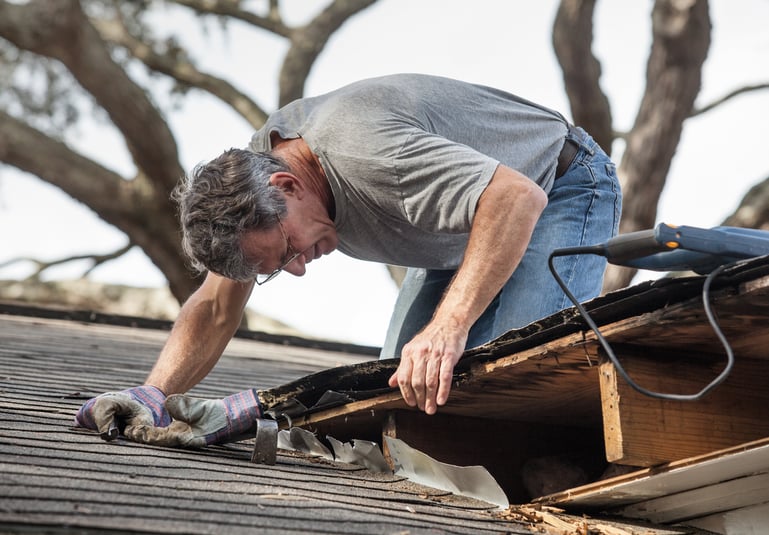 You should inspect your roof at least twice a year, or more, depending on how bad the past storm season was. Look for loose or missing shingles, damaged flashing, and cracked gutters. When you repair missing shingles, make sure the new ones are rated as class 3 or 4, as those have a better chance to withstand harsh, large hail impacts. Try not to skim on cost when it comes to repairing minor roof damage, as those materials are responsible for keeping your home and belongings secure from not only hail but wind and rain, as well.
You should inspect your roof at least twice a year, or more, depending on how bad the past storm season was. Look for loose or missing shingles, damaged flashing, and cracked gutters. When you repair missing shingles, make sure the new ones are rated as class 3 or 4, as those have a better chance to withstand harsh, large hail impacts. Try not to skim on cost when it comes to repairing minor roof damage, as those materials are responsible for keeping your home and belongings secure from not only hail but wind and rain, as well.
Trim Your Trees & Shrubs
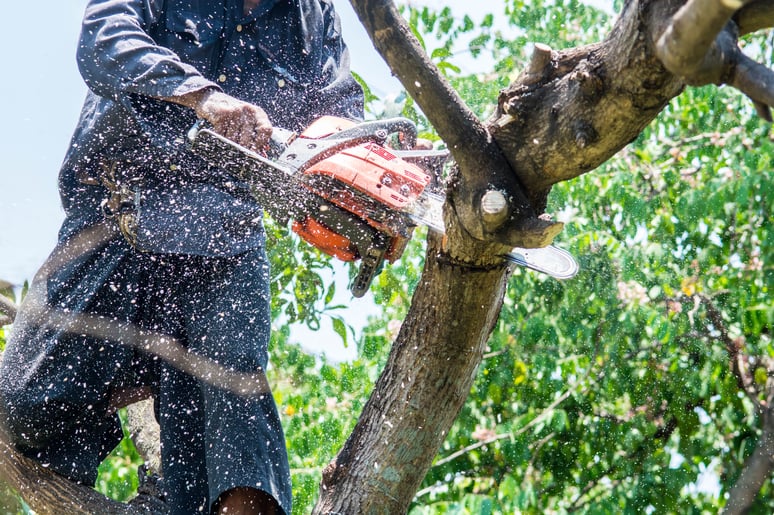 When you have overgrown trees and shrubs, your home is more susceptible to damage during a hailstorm. Hail, accompanied by high-speed winds, can take down dead limbs and sling them onto your roof and siding causing damage. To avoid this, regularly trim tree branches and shrubs that sit close to your home, especially near your windows and roof.
When you have overgrown trees and shrubs, your home is more susceptible to damage during a hailstorm. Hail, accompanied by high-speed winds, can take down dead limbs and sling them onto your roof and siding causing damage. To avoid this, regularly trim tree branches and shrubs that sit close to your home, especially near your windows and roof.
Keep Your Gutters Clean
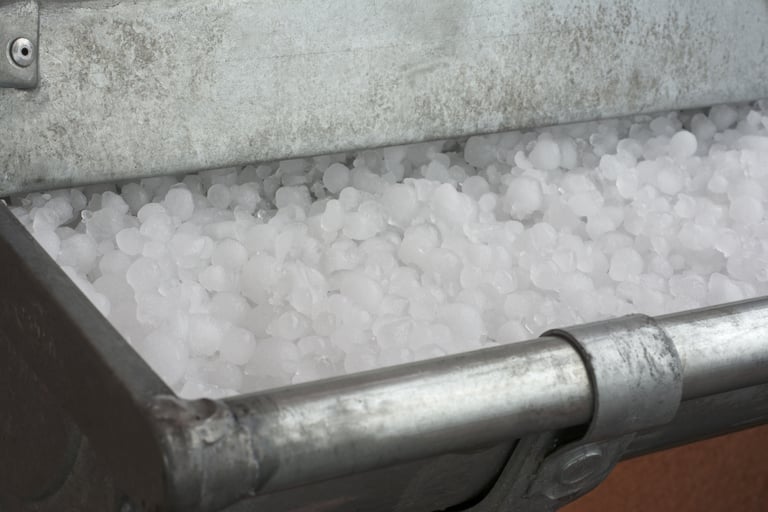 Remove leaves and other debris from your gutters before a storm, as they can block rain from flowing out and away from your home. When hail hits your gutters, it can pile up if it has no clear path out, leading to potential water damage in your home. It's also important to make sure your gutters are properly secured. Weak, loose, or weathered gutters need to be repaired/replaced immediately.
Remove leaves and other debris from your gutters before a storm, as they can block rain from flowing out and away from your home. When hail hits your gutters, it can pile up if it has no clear path out, leading to potential water damage in your home. It's also important to make sure your gutters are properly secured. Weak, loose, or weathered gutters need to be repaired/replaced immediately.
Download A Dependable Weather App
 You can stay ahead of the next hailstorm by jumping on the weather alert bandwagon. Some of our favorite weather apps are:
You can stay ahead of the next hailstorm by jumping on the weather alert bandwagon. Some of our favorite weather apps are:
While you can't prevent hailstorms from happening altogether, you can now considerably lower the risk of hail damage to your property by preparing with these tips before the storm. However, if your efforts fall short and you suspect your home may have hail damage, call your CFM agent to discuss the potential steps you need to explore.


Your Comments :